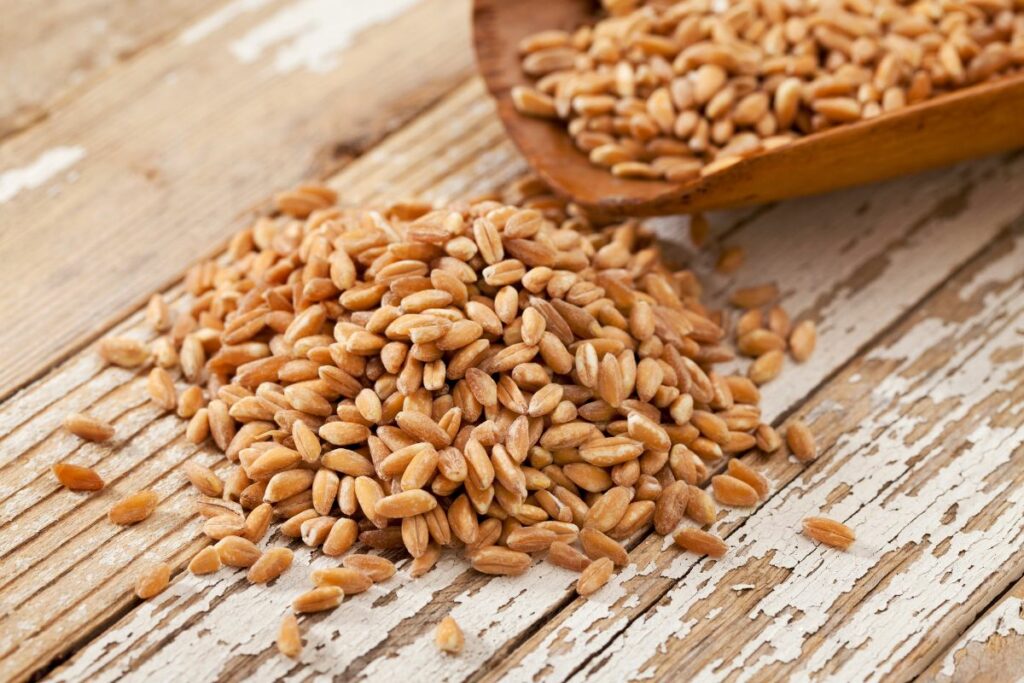Farro is a popular ancient grain that has been used for centuries in Mediterranean cuisine. It is a nutritious whole grain that is high in fiber, protein, and several essential vitamins and minerals. However, farro contains gluten, which can be problematic for people with celiac disease or gluten intolerance. Therefore, finding a gluten-free substitute for farro is essential for those who want to enjoy its nutritional benefits without experiencing adverse health effects.
Fortunately, there are several gluten-free alternatives to farro that can be used in various recipes. Rice, for instance, is a great substitute for farro. Brown rice, in particular, has a chewy texture and nutty flavor that is similar to farro. Quinoa is another excellent gluten-free option that is high in protein, fiber, and essential amino acids. It has a slightly nutty flavor and a delicate texture that makes it a versatile substitute for farro in salads, soups, and other dishes. Other gluten-free grains that can be used as substitutes for farro include amaranth, millet, and sorghum.
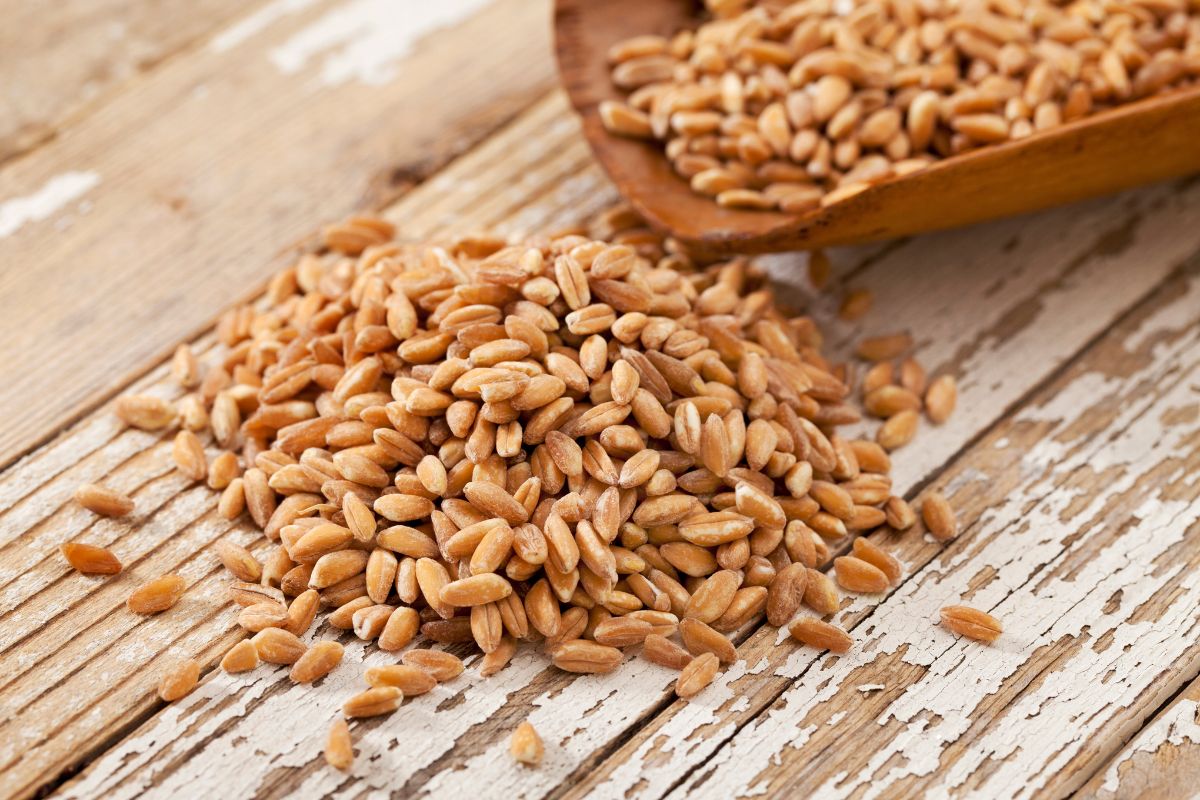
Contents
- 1 Understanding Farro
- 2 Why Substitute Farro
- 3 Gluten-Free Alternatives to Farro
- 4 Quinoa as a Substitute
- 5 Rice Varieties as Substitutes
- 6 Oats and Oat Groats
- 7 Buckwheat and Buckwheat Groats
- 8 Amaranth and Teff
- 9 Using Gluten-Free Pasta
- 10 Sorghum as a Substitute
- 11 Nutritional Comparison of Substitutes
- 12 Cooking with Gluten-Free Substitutes
- 13 Choosing the Best Substitute
- 14 Conclusion
Understanding Farro
Farro is an ancient grain that has been cultivated for thousands of years. It is a type of wheat that is closely related to emmer and spelt. Farro is a whole grain, which means that it contains all parts of the grain, including the bran, germ, and endosperm. This makes it a good source of fiber, protein, and nutrients.
Farro has a nutty flavor and a chewy texture, which makes it a popular ingredient in salads, soups, and grain bowls. It is also used to make pasta and bread. Farro is a versatile ingredient that can be used in a variety of dishes.
Farro is not gluten-free, which means that it is not suitable for people with celiac disease or gluten intolerance. However, there are many gluten-free substitutes for farro that can be used in recipes.
Overall, farro is a nutritious and delicious grain that is worth trying in your cooking. It is a great source of fiber, protein, and nutrients, and can be used in a variety of dishes.
Why Substitute Farro
Farro is a type of wheat grain that has been a popular ingredient in many dishes for centuries. However, for people with gluten intolerance, celiac disease or non-celiac gluten sensitivity, farro is not a viable option. Gluten is a protein found in many grains, including wheat, barley, and rye, and it can cause digestive problems in some people.
Substituting farro with gluten-free alternatives can help people with gluten intolerance enjoy the same flavors and textures in their meals without risking their health. There are a few reasons why someone might choose to substitute farro in their recipes:
Gluten Intolerance
People with gluten intolerance experience adverse reactions to gluten. Symptoms can include bloating, abdominal pain, and diarrhea. Consuming gluten can damage the lining of the small intestine, leading to malabsorption of nutrients. Substituting farro with gluten-free grains can help alleviate these symptoms.
Celiac Disease
Celiac disease is an autoimmune disorder that affects the digestive system. When people with celiac disease consume gluten, their immune system attacks the lining of the small intestine, leading to damage and inflammation. Substituting farro with gluten-free alternatives can help people with celiac disease avoid triggering their immune system.
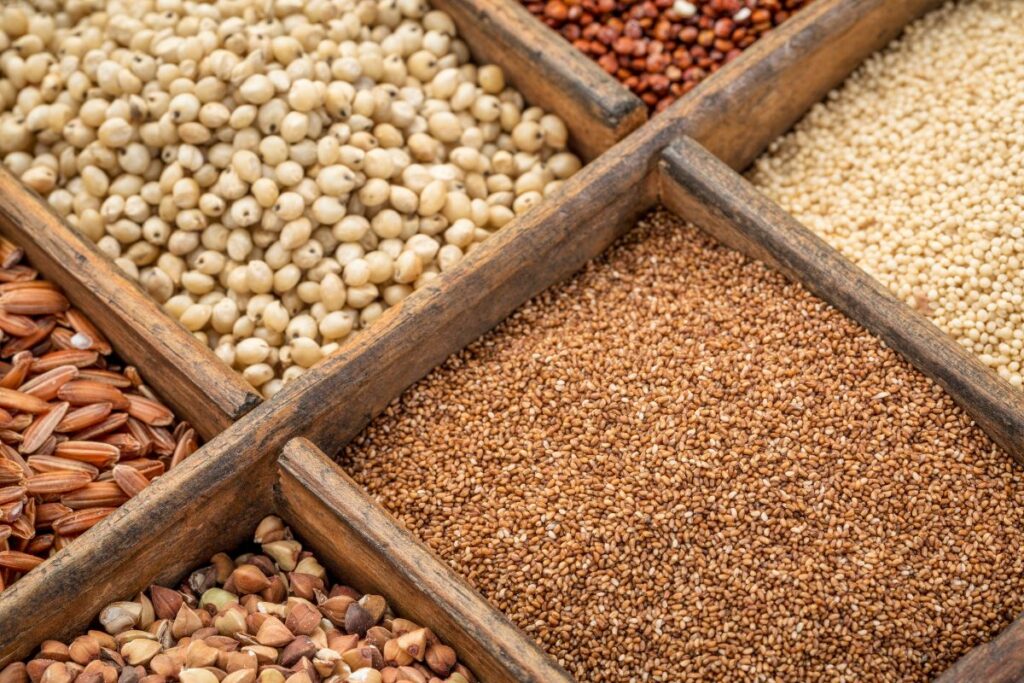
Non-Celiac Gluten Sensitivity
Non-celiac gluten sensitivity is a condition where people experience symptoms similar to celiac disease or gluten intolerance, but without the same immune response. Substituting farro with gluten-free grains can help alleviate these symptoms.
Allergies
Some people may have an allergy to wheat or other grains that contain gluten. Consuming these grains can lead to potentially life-threatening allergic reactions. Substituting farro with gluten-free alternatives can help people with grain allergies avoid triggering their allergic reactions.
In summary, substituting farro with gluten-free alternatives can help people with gluten intolerance, celiac disease, non-celiac gluten sensitivity, and allergies enjoy the same flavors and textures in their meals without risking their health.
Gluten-Free Alternatives to Farro
For those who are gluten intolerant or have celiac disease, finding a suitable substitute for farro can be a challenge. Fortunately, there are many gluten-free alternatives that can be used in place of farro in recipes. Here are some of the best gluten-free substitutes for farro:
Quinoa
Quinoa is a popular gluten-free grain that is often used as a substitute for farro. It has a similar nutty flavor and chewy texture, making it a great option for salads, soups, and grain bowls. Quinoa is also high in protein and fiber, making it a nutritious choice.
Brown Rice
Brown rice is another gluten-free grain that can be used as a substitute for farro. It has a similar chewy texture and nutty flavor, making it a great option for risottos, pilafs, and stir-fries. Brown rice is also a good source of fiber and minerals.
Wild Rice
Wild rice is not actually a type of rice, but rather a type of grass seed. It has a nutty flavor and chewy texture that is similar to farro, making it a good substitute. Wild rice is also high in protein and fiber, making it a nutritious choice.

Buckwheat
Buckwheat is a gluten-free grain that is often used in place of farro. It has a nutty flavor and chewy texture that is similar to farro, making it a good option for salads, soups, and grain bowls. Buckwheat is also high in protein and fiber, making it a nutritious choice.
Amaranth
Amaranth is a gluten-free grain that is often used as a substitute for farro. It has a nutty flavor and chewy texture that is similar to farro, making it a good option for porridges, pilafs, and salads. Amaranth is also high in protein and fiber, making it a nutritious choice.
Millet
Millet is a gluten-free grain that can be used as a substitute for farro. It has a mild flavor and a slightly crunchy texture, making it a good option for pilafs, salads, and grain bowls. Millet is also high in protein and fiber, making it a nutritious choice.
When substituting these grains for farro, keep in mind that cooking times and liquid ratios may vary. It is best to follow the cooking instructions for the specific grain you are using to ensure the best results.
Quinoa as a Substitute
Quinoa is a versatile gluten-free substitute for farro that can be used in a variety of dishes. It has a nutty flavor and a similar texture to farro, making it an excellent alternative. Quinoa is also a complete protein and provides all the essential amino acids in a diet, making it a great addition for vegans and vegetarians as well.
One of the benefits of using quinoa is its cooking time. Unlike farro, which can take up to 40 minutes to cook, quinoa takes only 15-20 minutes to prepare. This makes it a time-saving option for those who are short on time.
Quinoa can be used in salads, soups, burgers, breakfast bowls, and more. It can replace farro at a 1:1 ratio, making it easy to substitute in recipes.
To cook quinoa, rinse it thoroughly in a fine-mesh strainer and drain. Then, add it to a pot with water or broth and bring it to a boil. Reduce the heat, cover the pot, and let it simmer for 15-20 minutes or until the water is absorbed. Fluff the quinoa with a fork and serve.
Overall, quinoa is an excellent gluten-free substitute for farro that is easy to cook and can be used in a variety of dishes. Its nutty flavor and short cooking time make it a great option for those looking to add a healthy and versatile grain to their diet.
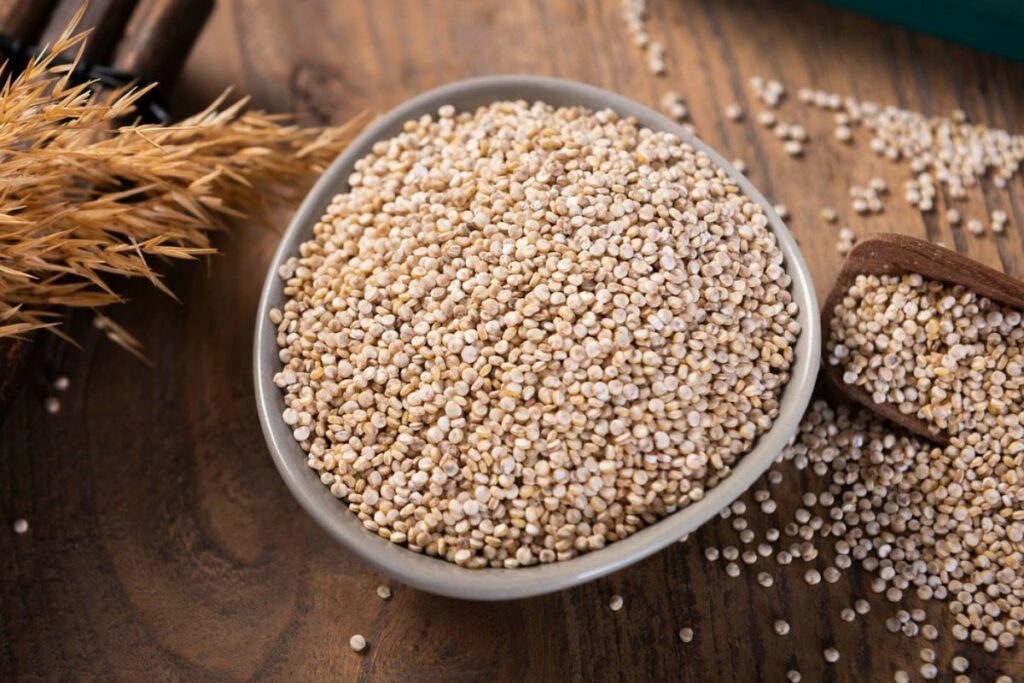
Rice Varieties as Substitutes
Rice is a popular grain that can be used as a gluten-free substitute for farro. Brown rice, in particular, is a great option because it has a similar nutty flavor and chewy texture to farro. It is also a better nutritional source, being higher in fiber and protein than white rice varieties.
Wild rice, which is not technically a type of rice but rather a grass, can also be used as a substitute for farro. It has a chewy texture and a nutty flavor that is similar to farro. Wild rice is also a good source of protein and fiber.
When using rice as a substitute for farro, it is important to keep in mind that the cooking time may vary depending on the type of rice used. Brown rice typically takes longer to cook than white rice, so it may require more time in the pot. Wild rice also takes longer to cook than white rice, so be sure to factor in the additional cooking time when preparing your dish.
Overall, rice is a versatile and tasty substitute for farro that can be used in a variety of dishes, from salads to pilafs. It is a great option for those who are looking for a gluten-free alternative to farro.
Oats and Oat Groats
For those looking for a gluten-free substitute for farro, oats and oat groats are a great option. Oats are naturally gluten-free and have a similar chewy texture to farro, making them an excellent replacement in recipes.
Oats come in many forms, including rolled oats, steel-cut oats, and oat groats. Oat groats are the whole oat grain with only the outer hull removed, while rolled oats and steel-cut oats are processed to varying degrees. Oat groats have a grainy taste and a chewy texture that is similar to farro, making them the best option for a farro substitute.
To use oat groats as a farro substitute, cook them in a 1:3 ratio of oats to water. Bring the water to a boil, add the oats, and reduce the heat to a simmer. Cook the oats for 25-30 minutes, or until tender. Drain any excess water and use the cooked oats in place of farro in your recipe.
In addition to their similar texture to farro, oats are also a nutritious substitute. Oats are high in fiber, protein, and several vitamins and minerals. They are also a versatile ingredient that can be used in a variety of sweet and savory dishes, from oatmeal and granola to meatloaf and veggie burgers.
Overall, oats and oat groats are an excellent gluten-free substitute for farro. They have a similar chewy texture and grainy taste, and are also packed with nutrition. Whether you’re looking to make a hearty grain salad or a comforting bowl of oatmeal, oats and oat groats are a great option.

Buckwheat and Buckwheat Groats
Buckwheat is a seed that is commonly used as a gluten-free substitute for grains like wheat, barley, and farro. Buckwheat is a good source of protein, fiber, and minerals like magnesium, copper, and manganese. It has a nutty flavor and a slightly chewy texture that makes it a great addition to salads, soups, and stir-fries.
Buckwheat groats are the hulled and crushed kernels of the buckwheat seed. They are commonly used in Eastern European and Asian cuisine to make porridge, pancakes, and noodles. Buckwheat groats are gluten-free and have a low glycemic index, which means they won’t cause a rapid spike in blood sugar levels.
Kasha is another name for roasted buckwheat groats. The roasting process gives kasha a nuttier flavor and a darker color than regular buckwheat groats. Kasha is commonly used in Eastern European cuisine to make side dishes, casseroles, and stuffing.
Both buckwheat and buckwheat groats are great substitutes for farro in gluten-free diets. They can be used in a variety of dishes, including salads, soups, stir-fries, and casseroles. Buckwheat flour can also be used as a substitute for wheat flour in baking recipes.
Here are some key points about buckwheat and buckwheat groats:
- Buckwheat is a seed that is commonly used as a gluten-free substitute for grains like wheat, barley, and farro.
- Buckwheat groats are the hulled and crushed kernels of the buckwheat seed.
- Kasha is roasted buckwheat groats that have a nuttier flavor and a darker color than regular buckwheat groats.
- Buckwheat and buckwheat groats are great substitutes for farro in gluten-free diets.
- They can be used in a variety of dishes, including salads, soups, stir-fries, and casseroles.
- Buckwheat flour can also be used as a substitute for wheat flour in baking recipes.
Amaranth and Teff
Amaranth and Teff are two gluten-free grains that can be used as substitutes for farro. They are both ancient grains that have been consumed for centuries and are considered superfoods due to their high nutritional value.
Amaranth is a small, round grain that has a slightly nutty flavor and a chewy texture. It is a good source of protein, fiber, and minerals such as iron and magnesium. Amaranth is also gluten-free, making it an ideal substitute for farro for those with gluten intolerance.
Teff, on the other hand, is a tiny grain that is native to Ethiopia. It has a mild, nutty flavor and a slightly sweet taste. Teff is also gluten-free and is a good source of protein, fiber, and minerals such as calcium and iron. One cup of cooked teff contains about 10 grams of protein, making it a great option for vegetarians and vegans.
Both amaranth and teff can be used in a variety of dishes, including salads, soups, and stews. They can also be cooked and served as a side dish, similar to rice or quinoa. When cooking with amaranth or teff, it is important to note that they both require different cooking times and water ratios than farro.
In summary, amaranth and teff are two excellent gluten-free substitutes for farro. They are both ancient grains that are considered superfoods due to their high nutritional value. Amaranth has a slightly nutty flavor and a chewy texture, while teff has a mild, nutty flavor and a slightly sweet taste. Both grains can be used in a variety of dishes and are great sources of protein, fiber, and minerals.
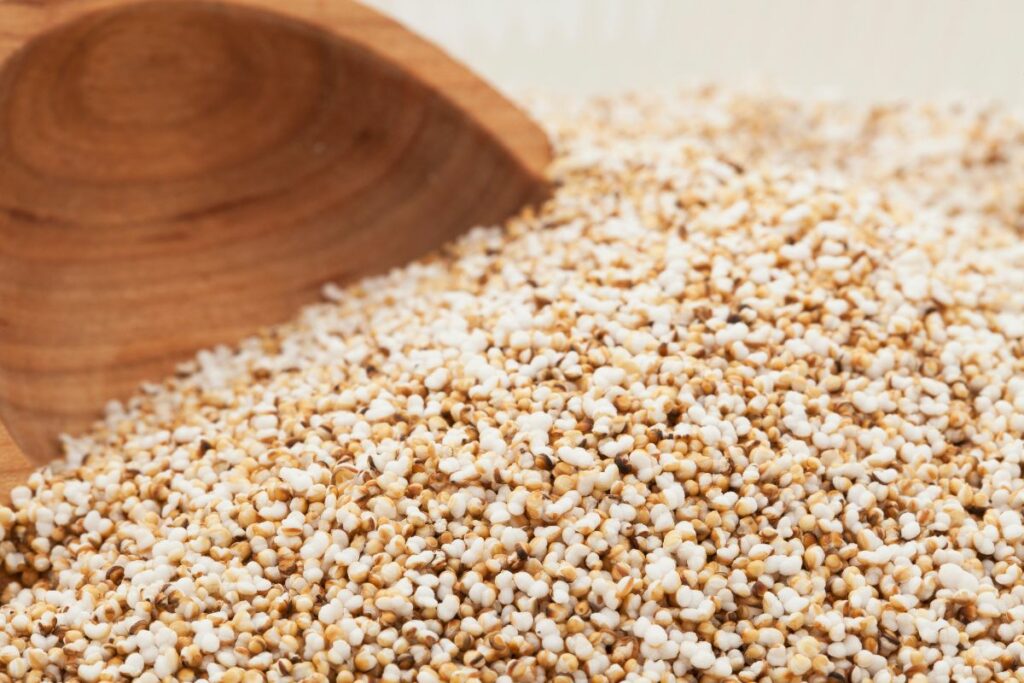
Using Gluten-Free Pasta
For those who want a similar texture to farro, gluten-free pasta can be a great substitute. There are many different types of gluten-free pasta available, including those made from rice, corn, quinoa, and chickpeas.
When using gluten-free pasta as a substitute for farro, it is important to keep in mind that the cooking time may be different. Gluten-free pasta tends to cook faster than wheat-based pasta, so be sure to check the package instructions and adjust accordingly.
One way to incorporate gluten-free pasta as a farro substitute is in salads. For example, a pasta salad with fresh vegetables and a light dressing can be a delicious and healthy meal. Another option is to use gluten-free pasta in soups or stews, as it can help to thicken the broth and add some bulk to the dish.
It is worth noting that some gluten-free pasta may have a slightly different texture or flavor compared to wheat-based pasta. However, with so many different types available, it is possible to find a gluten-free pasta that suits your taste preferences.
Overall, gluten-free pasta can be a versatile and tasty substitute for farro in a variety of dishes. It is a great option for those who are gluten intolerant or simply looking to try something new.
Sorghum as a Substitute
Sorghum is a gluten-free whole grain that can be used as a substitute for farro. It has a similar chewy texture and nutty flavor that makes it a great alternative to farro in many recipes.
Sorghum is a versatile ingredient that can be used in a variety of dishes, including salads, soups, and stews. It can also be used to make gluten-free flour for baking.
One of the benefits of using sorghum as a substitute for farro is that it is high in fiber and protein. It also contains important nutrients like iron, magnesium, and B vitamins.
To use sorghum as a substitute for farro, simply cook it according to the package instructions and use it in place of farro in your favorite recipes. You can also experiment with different cooking methods, such as roasting or boiling, to achieve different textures and flavors.
Overall, sorghum is a nutritious and delicious alternative to farro that can be easily incorporated into a gluten-free diet.
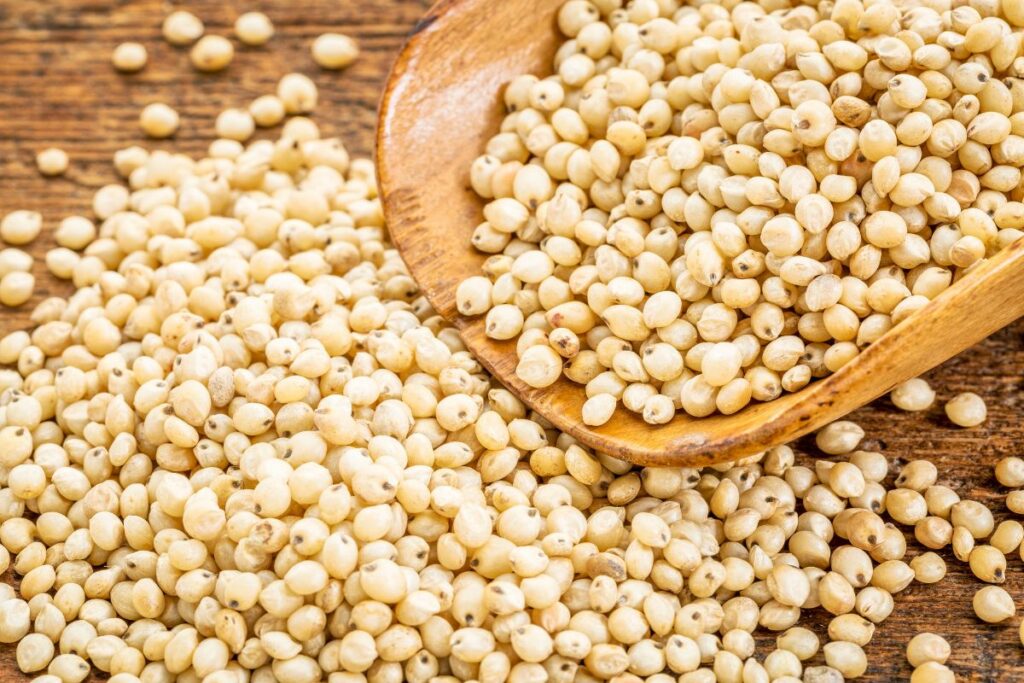
Nutritional Comparison of Substitutes
When it comes to finding a gluten-free substitute for farro, it is essential to consider the nutritional value of the substitutes to ensure that they can provide similar benefits as farro. Here is a nutritional comparison of some of the most popular gluten-free substitutes for farro:
Brown Rice
Brown rice is an excellent gluten-free substitute for farro. It is rich in fiber, vitamins, and minerals, and it has a nutty flavor that is similar to farro. Brown rice is also an excellent source of manganese, which is essential for healthy bones and skin. It is low in cholesterol and fat, making it a healthy addition to a balanced diet.
Quinoa
Quinoa is another great substitute for farro. It is a complete protein, which means it contains all nine essential amino acids that the body needs to function correctly. Quinoa is also rich in magnesium, iron, and fiber, making it a healthy and nutritious addition to any meal. It has a slightly nutty flavor and a crunchy texture that is similar to farro.
Barley
Barley is an excellent substitute for farro because it has a similar flavor and texture. It is rich in fiber, vitamins, and minerals, including magnesium, iron, and zinc. Barley is also an excellent source of antioxidants, which can help protect the body from cellular damage. It is low in fat and cholesterol, making it a healthy addition to a balanced diet.
Buckwheat
Buckwheat is a nutritious and gluten-free substitute for farro. It is rich in fiber, vitamins, and minerals, including magnesium, iron, and zinc. Buckwheat is also an excellent source of flavonoids, which are powerful antioxidants that can help protect the body from cellular damage. It has a nutty flavor and a slightly crunchy texture that is similar to farro.
Oats
Oats are a great gluten-free substitute for farro. They are rich in fiber, vitamins, and minerals, including magnesium, iron, and zinc. Oats are also an excellent source of beta-glucan, a type of soluble fiber that can help lower cholesterol levels. They have a slightly nutty flavor and a chewy texture that is similar to farro.
Overall, there are many gluten-free substitutes for farro that are nutritious and delicious. It is essential to choose a substitute that is rich in fiber, vitamins, and minerals to ensure that it provides similar benefits as farro.
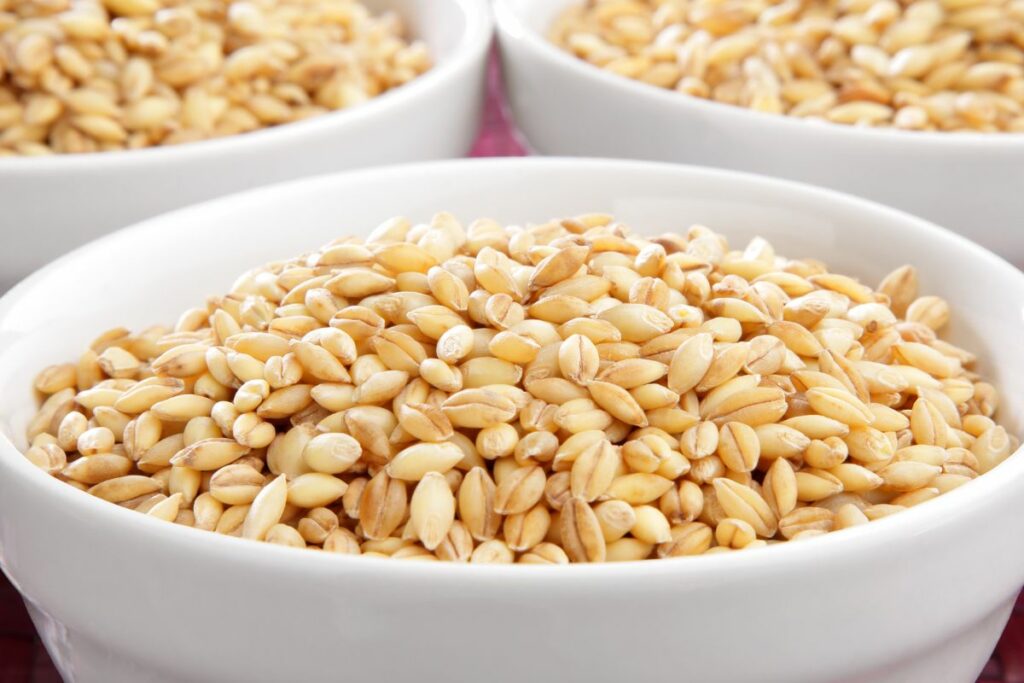
Cooking with Gluten-Free Substitutes
Cooking with gluten-free substitutes can be a bit of a challenge, especially if you are new to gluten-free cooking. However, there are many options available that can be used as a substitute for farro. Here are some tips and tricks that can help you cook with gluten-free substitutes:
Cooking Time
When cooking with gluten-free substitutes, it is important to keep in mind that the cooking time may be different from what you are used to. For example, quinoa cooks much faster than farro, so you will need to adjust your cooking time accordingly. Be sure to read the instructions on the package carefully and follow them closely.
Dishes
Gluten-free substitutes can be used in a variety of dishes, including risotto, soups, and grain bowls. Quinoa, brown rice, and barley are all great options that can be used in these dishes. They add a nutty flavor and chewy texture that is similar to farro.
Baking
Gluten-free substitutes can also be used in baking. Almond flour, coconut flour, and oat flour are all great options that can be used in muffins and other baked goods. They add a nutty flavor and can be used in place of regular flour in most recipes.
Risotto
Risotto is a classic Italian dish that is traditionally made with Arborio rice. However, you can use gluten-free substitutes like quinoa or brown rice to make a delicious gluten-free risotto. Just be sure to adjust the cooking time and liquid ratio accordingly.
Soups
Soups are another great way to use gluten-free substitutes. Quinoa, brown rice, and barley can all be used in soups to add a nutty flavor and chewy texture. They also add a hearty and filling element to the soup.
Grain Bowls
Grain bowls are a popular and healthy meal option that can be made with gluten-free substitutes. Quinoa, brown rice, and barley are all great options that can be used in grain bowls. They add a nutty flavor and chewy texture that is similar to farro.
In conclusion, cooking with gluten-free substitutes can be a bit of a challenge, but with the right tips and tricks, it can be done successfully. Be sure to read the instructions on the package carefully and follow them closely. With a little bit of practice, you can create delicious and healthy meals that are gluten-free.

Choosing the Best Substitute
When it comes to choosing the best gluten-free substitute for farro, there are several factors to consider. Taste and texture are important, but so are nutritional benefits like a low glycemic index and high fiber content. Here are some of the best farro substitutes and what makes them a great choice:
Brown Rice
Brown rice is a popular gluten-free substitute for farro. It has a similar chewy texture and nutty flavor, making it a great choice for dishes like salads and soups. Brown rice is also high in fiber and has a low glycemic index, which means it won’t cause a spike in blood sugar levels.
Quinoa
Quinoa is another excellent substitute for farro. It has a similar nutty flavor and slightly crunchy texture, and is also high in protein and fiber. Quinoa is also a good source of iron, magnesium, and other important nutrients.
Barley
Barley is a great substitute for farro because it has a similar flavor and texture. It is also high in fiber and has a low glycemic index. Barley is a versatile grain that can be used in a variety of dishes, from soups and stews to salads and side dishes.
Oat Groats
Oat groats are the whole grain form of oats and are a great gluten-free substitute for farro. They have a chewy texture and nutty flavor, and are also high in fiber and protein. Oat groats are a great choice for breakfast dishes like porridge, as well as in salads and soups.
Teff
Teff is a tiny grain that is native to Ethiopia and has a slightly sweet, nutty flavor. It is also high in protein and fiber, and has a low glycemic index. Teff is a great substitute for farro in dishes like pilafs and casseroles.
Overall, there are many great gluten-free substitutes for farro. When choosing a substitute, consider the taste, texture, and nutritional benefits of each grain to find the best one for your dish.
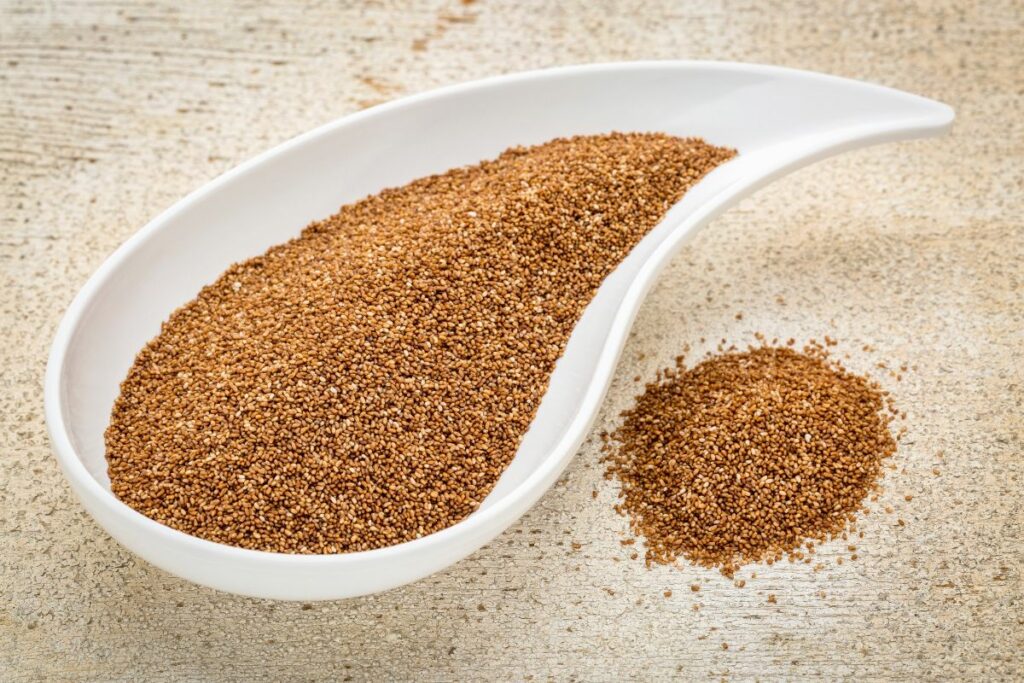
Conclusion
In conclusion, there are several gluten-free substitutes for farro available that can be used in a variety of dishes. Quinoa, rice, oat groats, teff, and spelt berries are excellent alternatives that can be used in place of farro in salads, soups, and other recipes.
Barley is also a great substitute for farro because it shares both flavor and texture with farro. It has a nutty flavor and a chewy texture that is similar to farro. Buckwheat, bulgur wheat, and freekeh are also good substitutes that can be used in recipes that require avoiding wheat or other grains.
When choosing a substitute for farro, it is important to consider the texture and flavor of the grain. Some grains may be more suitable for certain recipes than others. For example, rice is an excellent substitute for farro in salads, while barley is a better substitute for farro in soups.
Overall, individuals who are sensitive to gluten or have celiac disease can still enjoy the delicious taste and nutritional benefits of farro by incorporating gluten-free substitutes into their diet. By experimenting with different grains, individuals can find the perfect substitute for farro that fits their dietary needs and tastes.
